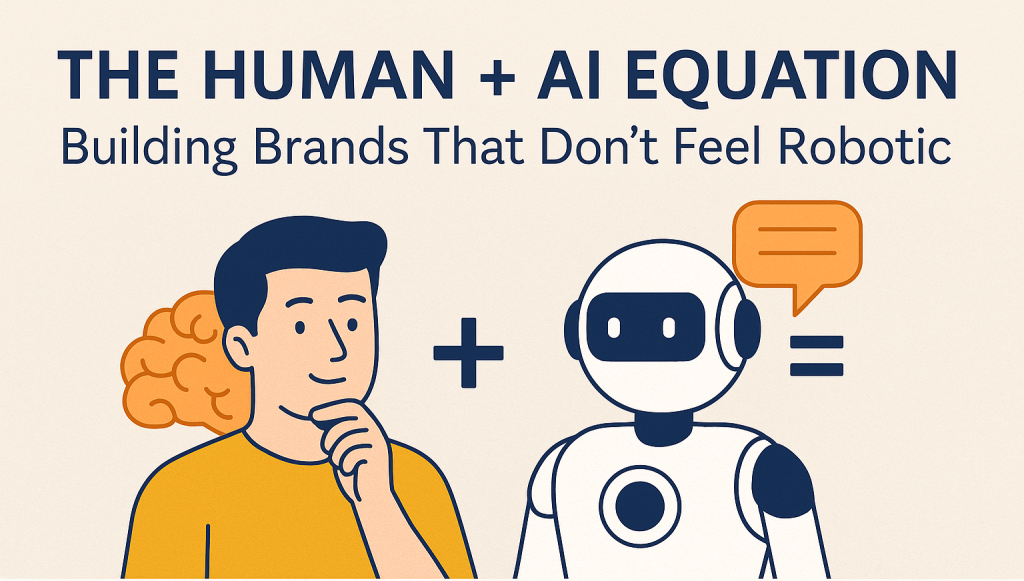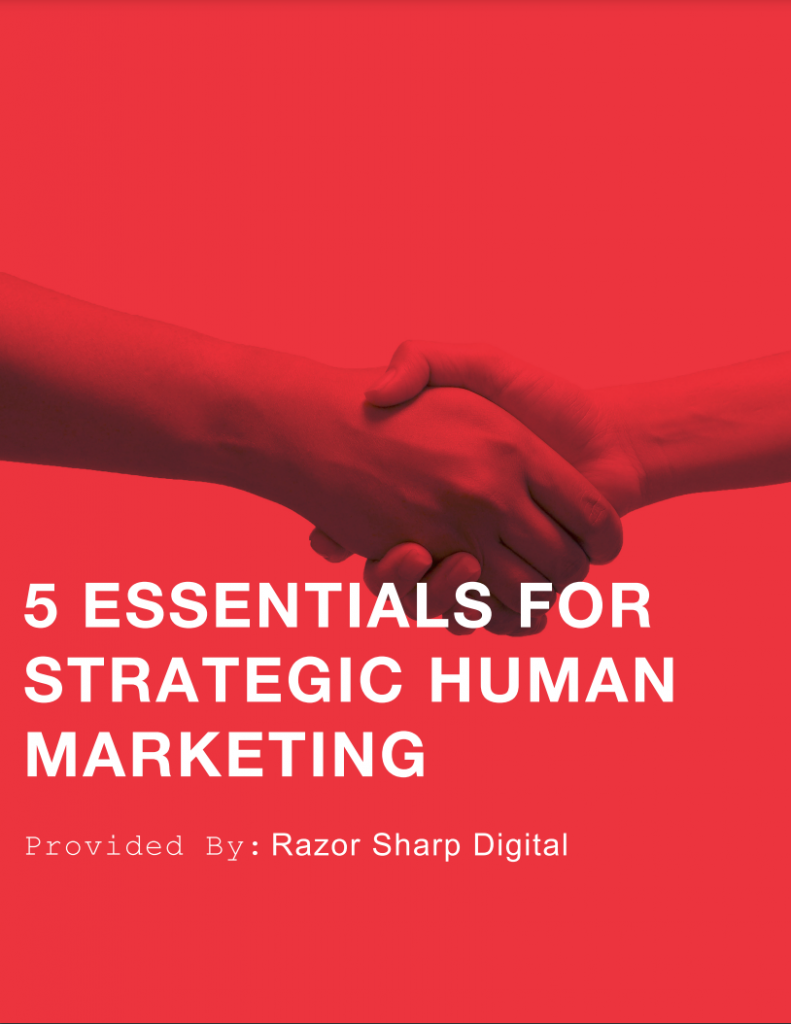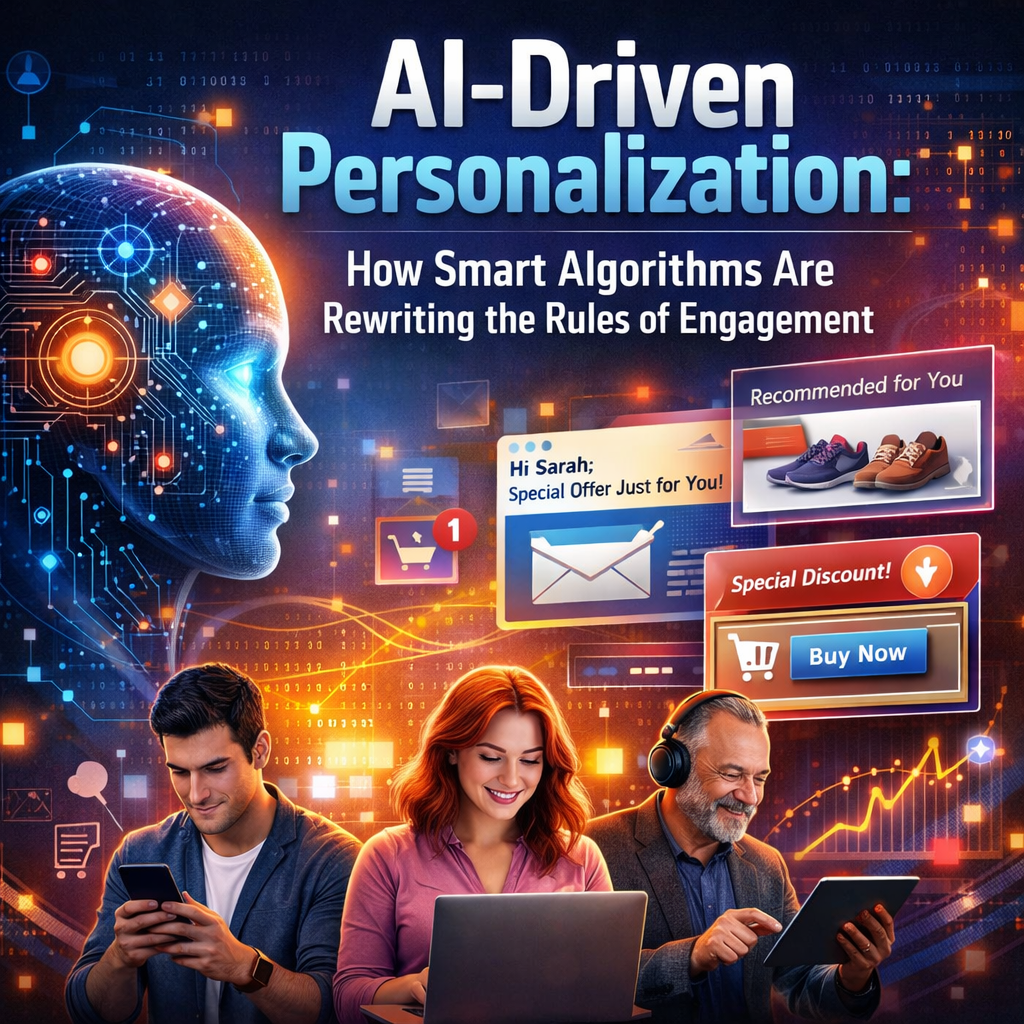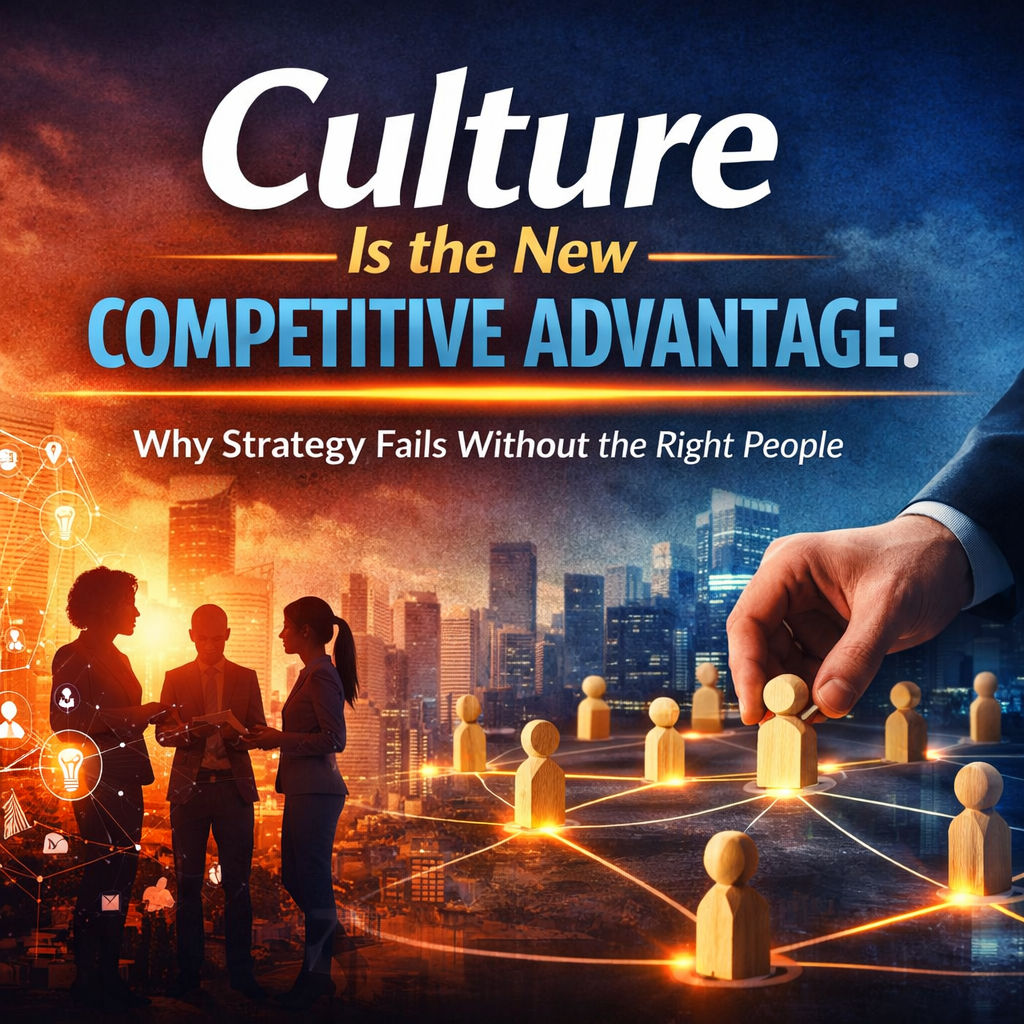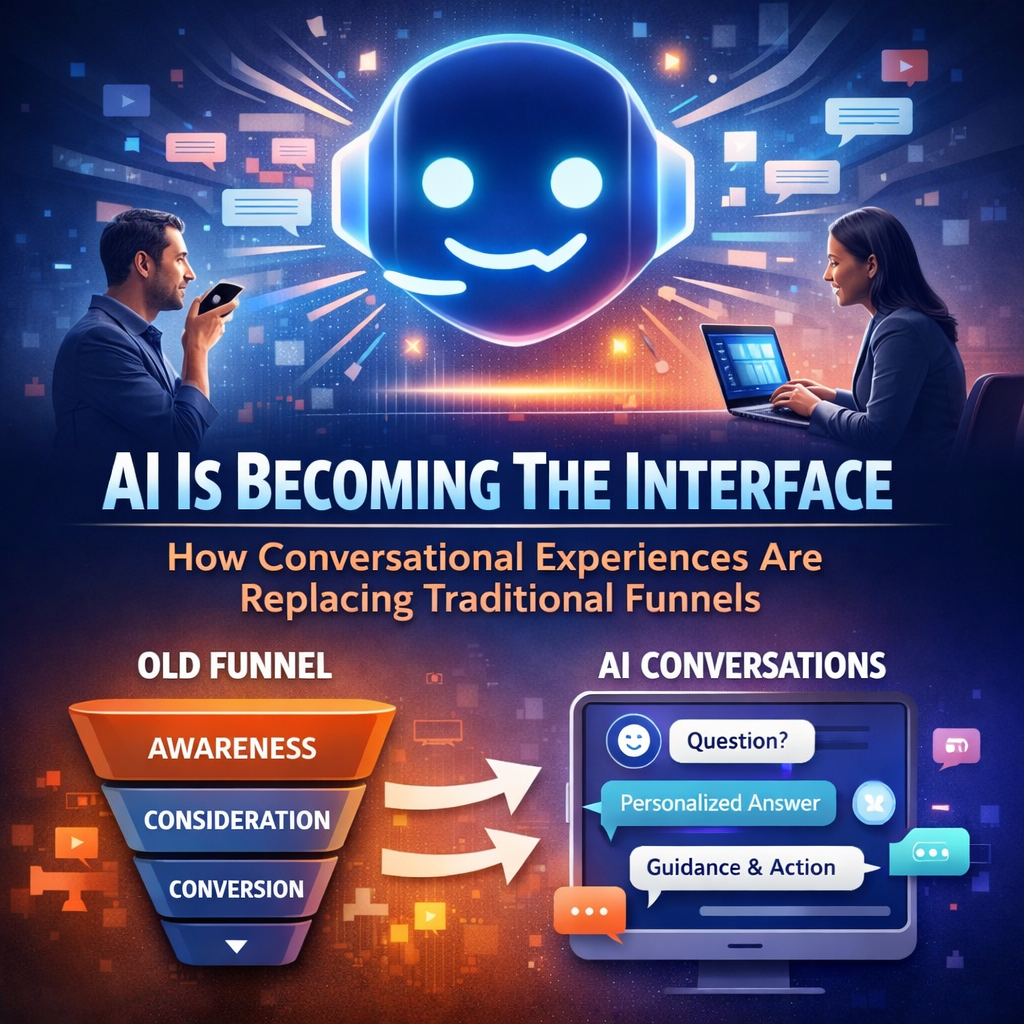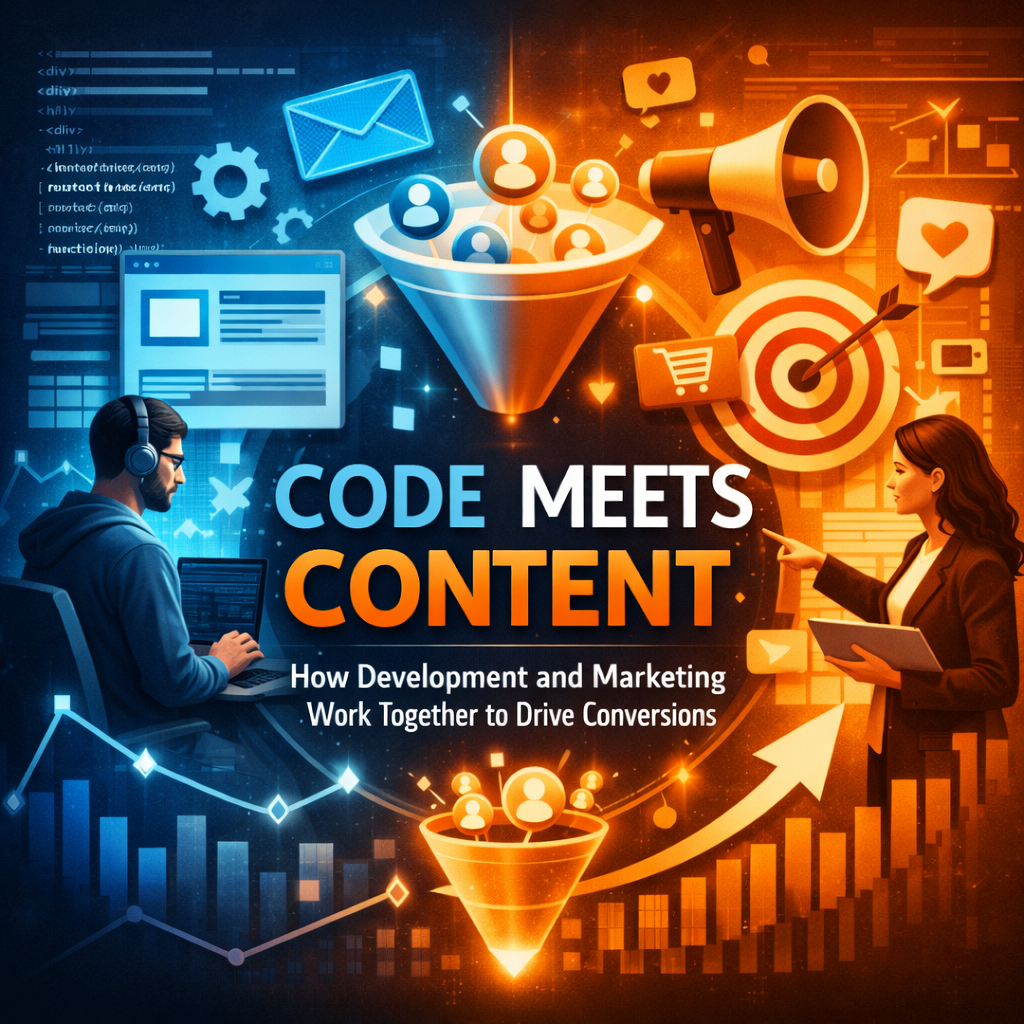But here’s the reality: brands that lean too heavily into automation risk becoming cold, robotic, and detached. Brands that ignore AI risk becoming irrelevant, inefficient, and invisible in a world run by algorithms. The future isn’t about choosing one over the other—it’s about the Human + AI equation.
When done right, this fusion creates brands that feel deeply personal while operating at digital scale. This is the equation that separates brands people trust from brands people scroll past.
Part 1: Why Brands Fail When They Go “All In” on AI
It’s tempting to lean into AI tools as a magic bullet. They’re fast, cheap, and seemingly endless in capability. But when brands replace human creativity with algorithmic output, something critical is lost—soul.
-
Over-automation alienates: Think of the last time you spoke to a chatbot that couldn’t understand your problem. Frustrating, right? A brand built on soulless automation risks turning away customers who crave connection.
-
Content overload without meaning: AI can generate mountains of blogs, captions, and ads. But if none of it resonates emotionally, it becomes noise, not influence.
-
The trust gap: Consumers are more skeptical than ever. If they sense that a brand’s voice isn’t authentic—or worse, is fully artificial—they disconnect.
The truth? People don’t want to be sold to by robots. They want to be understood by humans.
Part 2: Why Brands Fail When They Ignore AI
On the flip side, brands that cling solely to human-driven strategies risk irrelevance.
-
Speed matters: AI can analyze consumer behavior, trends, and performance metrics in seconds—what would take humans weeks. Without this edge, brands fall behind competitors.
-
Personalization at scale: Humans alone can’t deliver individualized experiences to thousands of customers simultaneously. AI can, and consumers now expect it.
-
Visibility in the AI-shaped web: With generative search, recommendation engines, and answer-driven discovery, brands without AI integration risk disappearing altogether.
The brands that survive won’t be the ones rejecting AI—they’ll be the ones wielding it responsibly.
Part 3: The Human + AI Equation Explained
So how do you build a brand that leverages AI without losing its humanity? It comes down to synergy, not substitution.
-
AI as the Engine, Human as the Driver
AI can provide insights, generate drafts, optimize timing, and scale reach. But humans must steer the narrative—deciding what stories matter, how they’re told, and how they reflect values.
-
Data + Emotion = Relevance
AI provides the data—customer journeys, behavioral insights, and trend predictions. Humans provide the emotion—understanding cultural nuance, empathy, and emotional triggers. Together, they create relevance that feels personal, not robotic.
-
Automation with a Human Overlay
Chatbots can handle FAQs. Humans should handle nuance, empathy, and exceptions. AI can draft copy, but humans must refine tone, voice, and cultural resonance.
This isn’t about man versus machine. It’s about building brand experiences that combine the best of both.
Part 4: Human + AI in Action (Real-World Brand Examples)
Example 1: Starbucks
Starbucks uses AI to personalize drink recommendations in its app, but the barista experience—the smile, the human greeting—remains central. This blend keeps it efficient but also warm.
Example 2: Nike
Nike uses AI for predictive design and demand forecasting but leans heavily into human storytelling in its campaigns. Emotional, human-first narratives (“Just Do It”) paired with AI-driven product drops keep the brand ahead.
Example 3: Spotify
Spotify’s AI curates hyper-personalized playlists, but it doesn’t just serve “songs.” Its human-first branding leans into emotion—“Discover Weekly feels like a friend who just gets me.”
The lesson? AI scales personalization, but humans make it feel alive.
Part 5: Principles for Building Brands That Don’t Feel Robotic
-
Define Core Human Values First
Before plugging in AI tools, clarify: Who are we? What do we stand for? What impact do we want to create? This gives AI a framework to work within.
-
Prioritize Transparency
Consumers aren’t naïve—they know brands use AI. Being upfront (“This response was AI-assisted, reviewed by our team”) builds trust instead of suspicion.
-
Humanize the Experience at Touchpoints
A chatbot is fine for FAQs—but always provide an “escape hatch” to a real human. Social posts should sound like a person, not a press release.
-
Create Stories, Not Just Content
AI can help ideate and draft, but your brand’s unique lived experiences and customer stories must shine through.
-
Monitor the “Trust Meter”
Constantly ask: Does this feel robotic? Does it reflect empathy? Would I engage with this? If the answer is no, revisit the balance.
Part 6: The Emotional Core of Human + AI Branding
At the heart of branding lies one simple truth: people remember how you make them feel.
-
Humans bring empathy, understanding, and intuition that can’t be automated.
-
AI brings scale, precision, and predictive power that humans can’t achieve alone.
When fused, they allow brands to meet people where they are—delivering relevance at scale without losing authenticity.
Think of it as a dance: AI provides the rhythm, but humans provide the movement. Together, they create harmony.
Part 7: Practical Steps for Brands Right Now
-
Audit Your Current Balance
Map out where you’re using AI and where human involvement is critical. Identify gaps where either side is underrepresented.
-
Implement AI with Guardrails
Use AI for efficiency—drafting content, analyzing trends, segmenting audiences. But set rules for human oversight to refine tone and values.
-
Train Your Team on Emotional Storytelling
Don’t just hand over AI tools—teach your people how to layer in empathy, narrative, and brand voice on top of machine output.
-
Focus on Long-Term Relationships
AI can win attention. Humans build loyalty. Combine them for sustainable brand equity.
-
Measure Both Hard + Soft Metrics
Don’t just track clicks and conversions. Measure trust, sentiment, engagement quality, and brand love.
Conclusion: The Future Belongs to Human + AI Brands
The brands of tomorrow won’t be the ones that feel hyper-automated and robotic. Nor will they be the ones clinging to outdated, human-only processes. The winners will be the ones that master the Human + AI equation.
This isn’t about replacing one with the other—it’s about augmenting. AI helps you scale. Humans help you connect. Together, they allow you to build brands that not only stand out in the algorithm-driven marketplace but also feel profoundly human.
The equation is simple but powerful:
AI without humans is cold. Humans without AI are limited. Together, they’re unstoppable.



